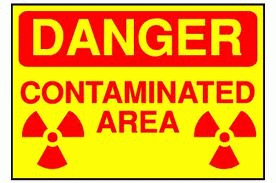IS THAT A FUKUSHIMA IN YOUR PANTS, OR ARE YOU JUST HOT ALL
THE TIME?
By William Boardman Email address removed
In something of a stealth maneuver during the 2012 holiday season, the U.S. Department of Energy set about to give every American a little more radiation exposure, and for some a lot, by allowing manufacturers to use radioactive metals in their consumer products -- such as zippers, spoons, jewelry, belt buckles, toys, pots, pans, furnishings, bicycles, jungle gyms, medical implants, or any other metal or partly-metal product.
The Energy Dept. announced its plan in the Federal Register on December 12 and invited comment for 30 days, through January 11, 2013. Citing its need to address environmental concerns under the National Environmental Protection Act (NEPA), the agency said, in part, that its plan was:
"to
delegate authority to manage radiological clearance and release of scrap metal
from radiological areas to each Under Secretary for sites under his or her
cognizance".
" This Draft PEA for the Recycling of Scrap Metals Originating from Radiological Areas analyzes the potential environmental impacts associated with resuming the clearance of scrap metal, originating from DOE radiological areas, for recycling pursuant to improved procedures designed to assure that clearance for release is limited to metals meeting stringent criteria."
Translated from the bureaucratese, this is a proposal to lift a ban on recycling radioactive metals left over from American bomb-making and other nuclear activities and allow them to be used commercially with "stringent" but largely unenforceable criteria for their use. The initial ban was ordered in 2000, by then Secretary of Energy Bill Richardson.
One
Congressman Challenges Energy Department
Largely ignored by mainstream media, the plan caught the attention of an alert Congressman, Rep. Edward Markey, D-MA, who wrote a three-page letter to Energy Secretary Steven Chu on January 11, beginning:
"I
write to convey my grave concerns regarding your December 2012 proposal to
rescind the agency-wide suspension of the release of radioactively contaminated
scrap metal from Department of Energy (DOE) facilities for purposes of
recycling it into consumer products that could ultimately by utilized by
pregnant women, children or other vulnerable populations. This proposal is unwise, and should be
immediately abandoned."
Although Rep. Markey was writing on the date of the original deadline, the Energy Department had invited the public to respond to an email address that was non-functional during the first nine days of the response period, December 12-20. On December 28, the department announced in the Federal Register that the comment period was extended to February 11, 2013.
On January 16, while taking note of Rep. Markey's letter, the Wall Street Journal covered the story by starting this way:
"The
Department of Energy is proposing to allow the sale of tons of scrap metal from
government nuclear sites--an attempt to reduce waste that critics say could lead
to radiation-tainted belt buckles, surgical implants and other consumer
products".
"The
approximately 14,000 tons of metal under review for possible initial release is
only a fraction of the tens of millions of tons of metal recycled annually, it
said. Smaller amounts could be eligible for release in future years.
"Selling
the metals could bring in $10 million to $40 million a year, the DOE estimates."
Nuclear
Industry Minimizes Radiation Dangers
As is common in nuclear industry proposals of all sorts, the Energy Department sought to assure readers of its proposal that any radiation exposure resulting from recycling radioactive waste into the commercial mainstream would have minimal impact on any given individual. The article in the Journal included a chart from the department that reinforced its claim that "would at worst expose a person to very low levels of additional radiation."
This approach ignores the current scientific consensus that there is NO safe level of radiation exposure. Since there is already a measurable level of background radiation worldwide, and since worldwide radiation levels have increased as a result of nuclear weapons testing and nuclear accidents like Chernobyl and Fukushima, the fundamental safety question is whether any additional radiation exposure is safe in any meaningful sense.
This approach also fails to deal with the reality that once the department has released radioactive materials for commercial use, it loses almost all control over how and where they're used, and in what concentrations. The same material used in a ceiling light fixture will pose less risk than if it is used in a belt buckle of jewelry, worn close to the skin. These uses are less dangerous than material inside a human body, in a joint replacement or heart valve.
Contaminated Products Come From
Everywhere
The issue is of global concern because other countries are recycling their radioactive waste as well, with uncertain control and safety. As Rep. Markey noted in his letter,
"Just
a year ago, Bed Bath and Beyond recalled tissue holders made in India that were
contaminated with low levels of the radio-isotope cobalt-60 that were shipped
to 200 of its stores in twenty states.
"The
Nuclear Regulatory Commission, when discussing the discovery of the
contaminated products, said that, "There's no real health threat from these,
but we advise people to return them.' "
While that may seem contradictory, it's mainly because the choice of the word "real" is not very accurate. It's true that there's no threat of immediate injury from a low level of radiation, whereas a high enough level will be lethal. It's also true that there may be no "realistic" threat from a radioactive tissue box, but that's not the same as "no threat," since harm from radiation exposure is cumulative.
Rep. Markey's letter illustrates this concern, as he notes that the Energy Department is proposing to release contaminated metals into the market place, as long as, quoting from the document, it "can be shown that the release will result in less that 1 millirem (mrem) above background to a member of the public in any calendar year." [One millirem is a tiny amount of radiation.]
Nevertheless, Rep. Markey expresses doubt about even this low standard: "I believe this standard, even it were the appropriate standard, will be impossible to assure or enforce." [emphasis added]
United States Has No One in Charge of Risk
There is no federal agency with responsibility for such oversight or enforcement. This regulatory vacuum was illuminated by the discovery in 2009 of thousands of contaminated consumer products from China, Brazil, France, Sweden and other countries, as reported by Mother Nature Network:
"The
risk of radiation poisoning is the furthest thing from our minds as we shop for
everyday items like handbags, furniture, buttons, chain link fences and cheese
graters. Unfortunately, it turns out that our trust is misplaced thanks to
sketchy government oversight of recycled materials.
The
discovery of a radioactive cheese grater led to an investigation that
found thousands of
additional consumer products to be contaminated. The source is
recycled metals tainted with Cobalt-60 ,
a radioactive isotope that can cause cancer with prolonged exposure.
According to a Scripps Howard News Service investigation in 2009, records of the Nuclear Regulatory Commission
-- show 18,740 documented cases involving radioactive materials in consumer
products, in metal intended for consumer products or other public exposure to
radioactive material.
"
The U.S. Government Accountability Office estimates there are some 500,000
unaccounted for radioactively contaminated metal objects in the U.S., and the
NRC estimates that figure is around is 20 million pounds of contaminated waste".
"In 2006 in Texas, for example, a recycling facility inadvertently created
500,000 pounds of radioactive steel byproducts after melting metal contaminated
with Cesium-137, according to U.S. Nuclear Regulatory Commission records. In
Florida in 2001, another recycler unintentionally did the same, and wound up
with 1.4 million pounds of radioactive material."
When
They Tried This Before, They Failed
Nuclear engineer Arnie Gunderson echoed Markey's warning in his January 13 podcast, pointing out that the nuclear industry has been trying to something like this for decades. The reason, he explained, was that radioactive materials are now liabilities for those who own that and are responsible for protecting them and eventually storing them safely. But if they can sell the material, the liability instantly becomes an asset.
NIRS, the Nuclear Information and Resource Service, has come out strongly against the Energy Department initiative, noting the long history of the industry to unburden itself of its radioactive waste and any responsibility for it:
"We've fought this battle before. In the late 1980s, NRC adopted a policy it
called "Below Regulatory Concern (BRC),' that would have allowed about 30% of
the nation's "low-level' radioactive waste to be treated as normal garbage and dumped
in landfills, be burned in incinerators, and yes, be recycled into consumer
products".
"NIRS and our allies responded with one of our largest organizing campaigns
ever". 15 states passed laws banning BRC within their borders. Hearings were
held in the House and in 1992, Congress officially overturned the BRC policy."
The grassroots action contributed to Secretary Richardson's ban on selling radioactive metals for commercial use, the ban that the current Energy Department proposal would overturn. The department has offered no new basis for its recycling program beyond streamlining what it proposed before. NIRS counters that:
"Nothing
has changed since 2000 that would justify lifting its current ban. Rather, just
the opposite: since then the National Academy of Sciences has acknowledged that
there is no safe level of radiation exposure, and we've learned that women are
even more vulnerable to radiation than men (while children have long been known
to be more vulnerable than adults)."
NIRS and other advocacy organizations are currently engaged in a campaign to submit comments before the February 11 deadline to ask the Energy Department to withdraw this proposal.
William Boardman runs Panther Productions .
Reader Supported News is the Publication of Origin for this work. Permission to republish is freely granted with credit and a link back to Reader Supported News.







